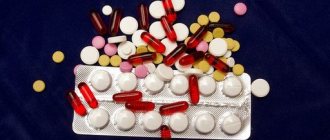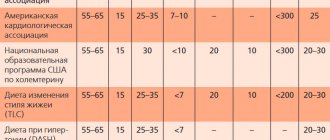Acetylcysteine Canon gran.d/prepared solution for oral administration package 100mg No. 20
Indications
Respiratory diseases and conditions accompanied by the formation of viscous and mucopurulent sputum: acute and chronic bronchitis, tracheitis due to bacterial and/or viral infection, pneumonia, bronchiectasis, bronchial asthma, atelectasis due to blockage of the bronchi with a mucus plug, sinusitis (to facilitate the passage of secretions ), cystic fibrosis (as part of combination therapy).
Preparation for bronchoscopy, bronchography, aspiration drainage.
Removal of viscous secretions from the respiratory tract in post-traumatic and postoperative conditions.
For washing abscesses, nasal passages, maxillary sinuses, middle ear, treatment of fistulas, surgical field during operations on the nasal cavity and mastoid process.
pharmachologic effect
Mucolytic agent is a derivative of the amino acid cysteine. It has a mucolytic effect, increases the volume of sputum, facilitates its discharge due to a direct effect on the rheological properties of sputum. The action of acetylcysteine is associated with the ability of its sulfhydryl groups to break intra- and intermolecular disulfide bonds of acidic mucopolysaccharides of sputum, which leads to depolarization of mucoproteins and a decrease in sputum viscosity.
Reduces induced hyperplasia of mucoid cells, enhances the production of surfactants by stimulating type II pneumocytes, stimulates mucociliary activity, which leads to improved mucociliary clearance.
Remains active in the presence of purulent, mucopurulent and mucous sputum.
Increases the secretion of less viscous sialomucins by goblet cells, reduces the adhesion of bacteria to the epithelial cells of the bronchial mucosa. Stimulates mucous cells of the bronchi, the secretion of which is lysed by fibrin. It has a similar effect on the secretions formed during inflammatory diseases of the ENT organs.
It has an antioxidant effect due to the ability of its reactive sulfhydryl groups (SH groups) to bind to oxidative radicals and thus neutralize them.
Acetylcysteine easily penetrates into the cell and is deacetylated to L-cysteine, from which intracellular glutathione is synthesized. Glutathione is a highly reactive tripeptide, a powerful antioxidant and cytoprotector that neutralizes endogenous and exogenous free radicals and toxins. Acetylcysteine prevents exhaustion and helps increase the synthesis of intracellular glutathione, which is involved in the redox processes of cells, promoting the detoxification of harmful substances. This explains the effect of acetylcysteine as an antidote for paracetamol poisoning.
Protects alpha1-antitrypsin (elastase inhibitor) from the inactivating effects of HOCI, an oxidizing agent produced by myeloperoxidase of active phagocytes. It also has an anti-inflammatory effect (by suppressing the formation of free radicals and reactive oxygen-containing substances responsible for the development of inflammation in the lung tissue).
Drug interactions
The simultaneous use of acetylcysteine with antitussives may increase sputum stagnation due to suppression of the cough reflex.
When used simultaneously with antibiotics (including tetracycline, ampicillin, amphotericin B), their interaction with the thiol group of acetylcysteine is possible.
The simultaneous use of acetylcysteine and nitroglycerin can cause a pronounced decrease in blood pressure and headache.
The simultaneous use of acetylcysteine and carbamazepine may be accompanied by a decrease in the concentration of carbamazepine to subtherapeutic levels.
Acetylcysteine eliminates the toxic effects of paracetamol.
Acetylcysteine may interfere with the colorimetric determination of salicylates.
Acetylcysteine may interfere with urine ketone test results.
Dosage regimen
Orally for adults and children over 6 years old - 200 mg 2-3 times a day; children aged 2 to 6 years - 200 mg 2 times / day or 100 mg 3 times / day.
For inhalation and intratracheal use, the dose, frequency of use and course duration are set individually.
Locally - 150-300 mg is instilled into the external auditory canal and nasal passages per 1 procedure.
Contraindications for use
Peptic ulcer of the stomach and duodenum in the acute phase, hemoptysis, pulmonary hemorrhage, lactation period (breastfeeding), children under 2 years of age, hypersensitivity to acetylcysteine.
Contraindications for use in children under 14 years of age depend on the dosage form and are indicated in the instructions for use of the drug used.
Use in children
When using acetylcysteine in patients with bronchial asthma, it is necessary to ensure sputum drainage. In newborns, it is used only for health reasons at a dose of 10 mg/kg under the strict supervision of a physician.
Orally for children over 6 years old - 200 mg 2-3 times a day; children aged 2 to 6 years - 200 mg 2 times / day or 100 mg 3 times / day, up to 2 years - 100 mg 2 times / day.
Restrictions for children
Use with caution
Restrictions for elderly patients
No data
Use for liver dysfunction
Acetylcysteine should be used with caution in patients with liver disease.
Restrictions for liver dysfunction
Use with caution
Use during pregnancy and breastfeeding
If use during pregnancy is necessary, the expected benefits of therapy for the mother and the possible risk to the fetus should be carefully weighed.
Contraindicated for use during lactation (breastfeeding).
Restrictions when breastfeeding
Contraindicated
Restrictions during pregnancy
Contraindicated
Use for renal impairment
Acetylcysteine should be used with caution in patients with kidney disease.
Restrictions for impaired renal function
Use with caution
special instructions
Use with caution in the following diseases and conditions: history of gastric and duodenal ulcers; bronchial asthma, liver and/or kidney failure; histamine intolerance (long-term use should be avoided, since acetylcysteine affects the metabolism of histamine and can lead to signs of intolerance, such as headache, vasomotor rhinitis, itching); varicose veins of the esophagus; adrenal gland diseases; arterial hypertension.
When using acetylcysteine in patients with bronchial asthma, it is necessary to ensure sputum drainage.
A 1-2 hour interval should be observed between taking acetylcysteine and antibiotics.
The compliance of the route of administration and the dosage form used should be strictly observed.
Side effect
Allergic reactions:
urticaria, rash, itching, angioedema, anaphylactic reactions, facial swelling.
From the nervous system:
headache.
From the organ of hearing and balance:
noise in ears.
From the cardiovascular system:
tachycardia, decreased blood pressure, bleeding.
From the respiratory system:
bronchospasm, dyspnea.
From the digestive system:
vomiting, diarrhea, stomatitis, abdominal pain, nausea, dyspepsia.
General reactions:
pyrexia.
Acetylcysteine Canon
Inside. The granules should be dissolved in water at room temperature and taken after meals.
Granules for the preparation of solution for oral administration 100 mg, 200 mg.
In the absence of other prescriptions, it is recommended to adhere to the following dosages:
Mucolytic therapy
Adults and adolescents over 14 years of age: it is recommended to take 2 sachets of Acetylcysteine Canon 100 mg or 1 sachet of Acetylcysteine Canon 200 mg 2-3 times a day (400-600 mg per day).
Children aged 6 to 14 years: it is recommended to take 1 sachet 3 times a day or 2 sachets 2 times a day of Acetylcysteine Canon 100 mg (300-400 mg per day). The drug Acetylcysteine Canon 200 mg should be taken 1/2 sachet 3 times a day or 1 sachet 2 times a day (300-400 mg per day).
Children aged 2 to 6 years: it is recommended to take 1 sachet of Acetylcysteine Canon 100 mg 2-3 times a day (200-300 mg per day).
Cystic fibrosis
Children over 6 years of age: it is recommended to take 2 sachets of Acetylcysteine Canon 100 mg or 1 sachet of Acetylcysteine Canon 200 mg 3 times a day (600 mg per day).
Children aged 2 to 6 years: it is recommended to take 1 sachet of Acetylcysteine Canon 100 mg 4 times a day (400 mg per day).
For patients with cystic fibrosis and a body weight of more than 30 kg, if necessary, the dose can be increased to 800 mg of acetylcysteine per day.
Additional fluid intake enhances the mucolytic effect of the drug.
For short-term colds, the duration of use is 5-7 days.
For long-term illnesses, the duration of therapy is determined by the attending physician. For chronic bronchitis and cystic fibrosis, the drug should be taken for a longer period of time to achieve a preventive effect against infections.
Cautions
:
Granules for solution for oral administration 200 mg
Due to the high content of the active substance (200 mg of acetylcysteine per sachet), the drug should not be taken by children under 6 years of age. In this case, it is recommended to use the drug Acetylcysteine Canon in other dosage forms with a lower acetylcysteine content.
Granules for solution for oral administration 600 mg
In the absence of other prescriptions, it is recommended to adhere to the following dosages.
1 sachet of Acetylcysteine Canon 600 mg 1 time per day (600 mg acetylcysteine per day).
Cautions:
Due to the high content of the active substance (600 mg of acetylcysteine per sachet), the drug should not be taken by children under 14 years of age. In this case, it is recommended to use the drug Acetylcysteine Canon in other dosage forms with a lower acetylcysteine content.
For short-term colds, the duration of use is 5-7 days.
For chronic bronchitis and cystic fibrosis, the drug should be taken for a longer period of time to achieve a preventive effect against infections.

